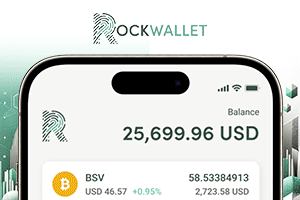|
Getting your Trinity Audio player ready...
|
Two of the largest economies in the Middle East have described a central bank digital currency as an improvement over the centralized payment systems. The UAE and Saudi Arabia’s central banks released a report on their joint CBDC research recently, revealing it had exceeded performance objectives.
Dubbed Project Aber, the joint effort between the Saudi Arabia Monetary Authority (SAMA) and the Central Bank of the UAE (CBUAE) kicked off in early 2019. As CoinGeek reported, the two central banks admitted select commercial banks into the trial.
Two years later, the two have released their final report on Project Aber.
“The project confirmed that a cross-border dual issued currency was technically viable and that it was possible to design a distributed payment system that offers the two countries significant improvement over centralized payment systems in terms of architectural resilience,” the report claimed.
The research project has met all the key requirements, “including complex requirements around privacy and decentralization.” In addition, the CBDC had mitigated economic risks such as traceability of issued currency and visibility of money supply.
On the choice of name, the two regulators revealed it was because Aber in Arabic means crossing borders. This captures the cross-border nature of the project.
The regulators had structured the project into three phases. The first was to explore cross-border settlements between the two central banks. In the second, they explored domestic payments between three local commercial banks using the CBDC. In the third phase, they trialed cross-border transactions between commercial banks.
For the future, the two countries will be looking to use the CBDC to replace domestic and regional RTGS systems. They believe that it would be a “resilient alternative to the centralized systems.” They also believe it would impact the Delivery versus Payment (DvP) systems as a means of settlement such as in bond sales.
SAMA and CBUAE further stated that they could extend the CBDC “geographically to include regional or other international central banks or linking heterogeneous networks together.” They concluded:
“The project was successful in meeting its objectives, demonstrated possible incremental benefits of this new approach to payments, identified important lessons learned that can benefit other central banks exploring the field, and has identified several areas of future expansion that can be considered by either the participants in this project or other central banks.”
The two countries join several others that have made great progress in CBDC development, with the Bahamas leading the way. The Caribbean island nation recently launched the Sand Dollar, the world’s first official CBDC. In addition to advancing more inclusive access to the underbanked, the Bahamas also believes that Sand Dollar will be more resilient in the face of disasters such as hurricanes which are common in the island.
To learn more about central bank digital currencies and some of the design decisions that need to be considered when creating and launching it, read nChain’s CBDC playbook.
See also: CoinGeek Live panel on The Future of Banking, Financial Products & Blockchain

 08-17-2025
08-17-2025 





